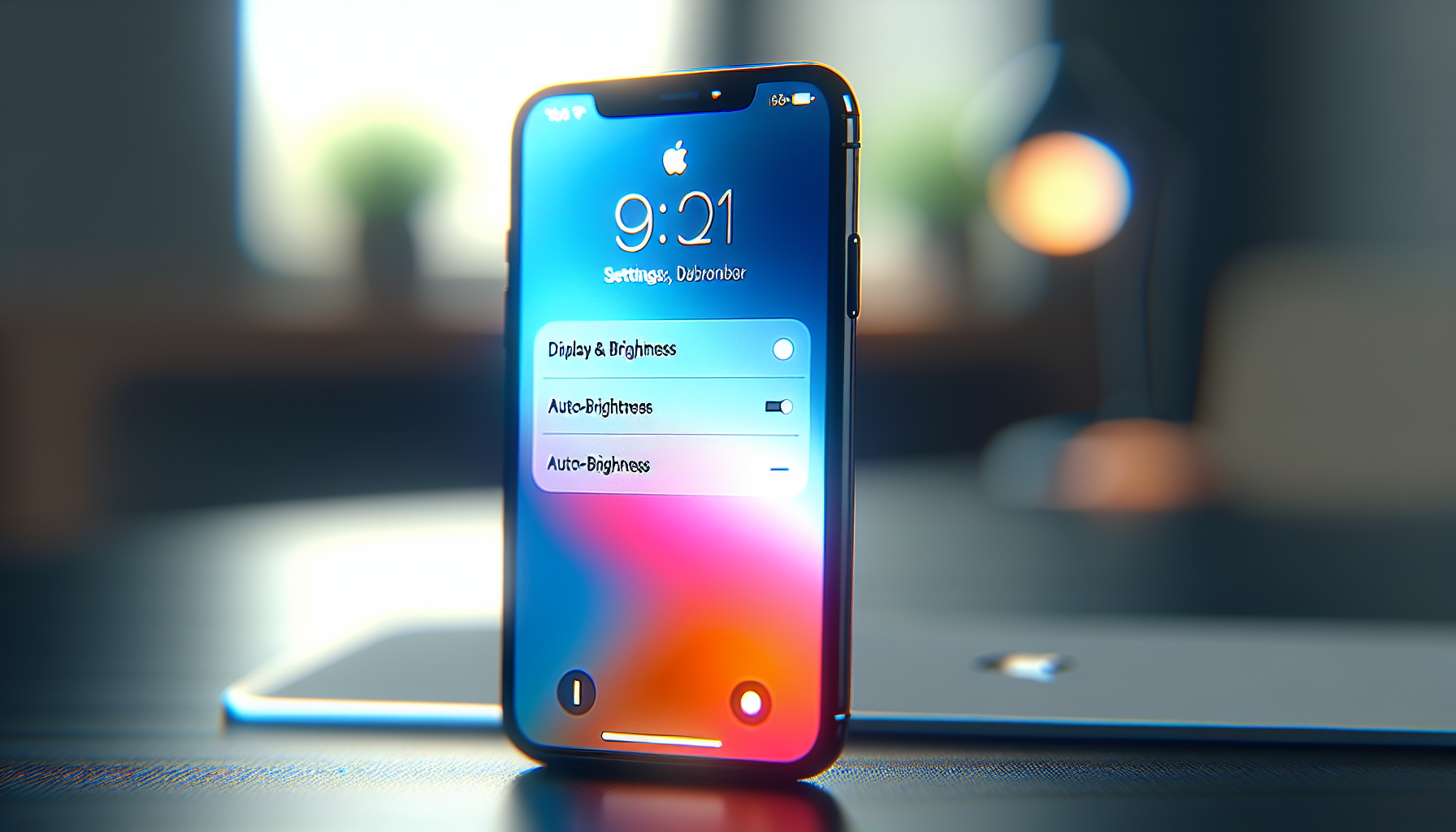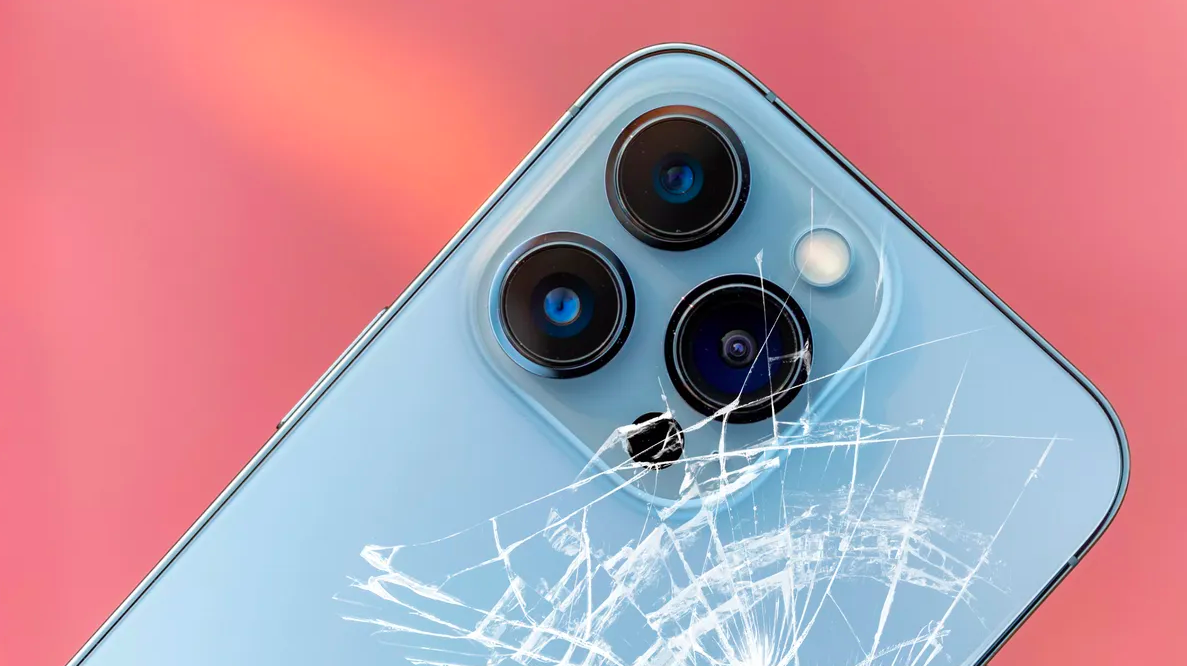Nothing feels worse than your iPhone malfunctioning when you need it most.
During an important phone call, in the middle of a sports game, when you’re lost and searching for directions… It always seems to happen at the worst possible time.
Unfortunately, some of these glitches simply aren’t fixable.
On the bright side, most of them are.
Here are some causes, solutions, and basic info about almost every type of iPhone glitch out there.
Common iPhone Screen Glitches:
- Screen flickering
- Doubled images
- Random changes in brightness
- Ghost Touches
- Temporary discoloration
- Dead pixels
- LCD spots, lines, or burns
- Loss of visibility or screen clarityPotential Solutions To Any Screen Glitch:
1. Restart Your iPhone
Turn your iPhone off, wait about 30 seconds, and turn it back on. This will reset your device’s processes and help clear temporary bugs and glitches that may cause screen issues.
For iPhone 8/S/X/11/12/13/14/15, press and release the Volume Up button, then Volume Down, and hold the Power button until the Apple logo appears.
2. Update Your Operating System
Another potential quick fix is updating your iPhone to the most recent iOS version.
It can fix and prevent glitches, enhance your phone’s overall performance, and even bring in new features. To update your iOS, follow these steps:
- Go to the Settings app.
- Tap on General.
- Tap on Software Update.
- Select the desired iOS version to begin the update.
Before updating the iOS on your iPhone, make sure to:
- Connect your iPhone to Wi-Fi
- Make sure your iPhone has enough battery life or is plugged into a power source
3. Managing iPhone Storage
Well-managed storage can also help fix some malfunctions. To check your iPhone storage, go to Settings > General > iPhone Storage. This management screen provides a visual representation of storage usage, showing how space is used between:
- Applications
- Photos
- Messages
- iCloud Drive
- System Data & More
Insufficient storage can lead to performance problems like screen lagging and other glitches, which is why maintaining at least 1GB of free space is recommended for optimal performance.
To manage iPhone storage and improve performance, users can follow storage-saving recommendations in Settings, and consider offloading or deleting messages and other data, which frees up space.
4. Force Quit Bad Apps
Swipe up from the very bottom of your screen and pause in the middle of the screen. All of your applications that are open should appear. Swipe up on the application and release. This will force quit the app. Do this for any apps running that you think could be slowing your phone down or causing it to glitch.
5. Uninstall Bad Apps
Press and hold an app that may be causing your iPhone glitching issues. Click remove app, then delete app. This should uninstall the app and will likely stop any glitching problem that it’s causing you. Make sure you do this with any application you suspect of causing the issues.
6. Turn On Reduce Transparency
Go to settings, click accessibility, then click display and text size. Turning on reduce transparency can especially help with glitching issues related to screen brightness.
7. Take Your Phone To A Repair Shop
As a last resort, you can try taking your phone into a repair shop. Only do this once you’ve tried everything else.
More than likely your iPhone screen will need to be replaced, and prices can vary depending on where you go. We recommend only going to reputable businesses with good reviews.
Quality is king when it comes to any kind of repair, especially electronics repair. Low-quality replacement parts can not only decrease your phone’s resale value, but they can even worsen the problem overtime.
Wherever you take your phone for a repair, make sure their work is high-quality.
Black Spots In Your Screen?
If your phone has black spots, it’s likely “dead pixels”. This can be caused from physical damage to the screen and other things. To fix it, press and hold a pen onto your screen, with a piece of cloth in the middle.
Unfortunately, this will rarely fix the issue. The only way to surely remove the pixels is by replacing your screen. Search for nearby cell phone shops that offer screen repair at a reasonable price.
Also, if you do replace your screen, make sure the replacement screen is high-quality. Poor-quality displays can be fragile and prone to more problems. They also can cause the value of your phone to significantly drop.
Lines Or Colors In Your Screen?
If your phone has lines or unusual colors, it’s most likely “bad LCD display”. Unfortunately, there is no real way to fix this issue other than by replacing your screen. Again, remember to get a high-quality screen replacement if you choose to repair your iPhone.
Understanding Your iPhone’s Screen Glitches

There are tons of different screen glitches with different causes. It’s important to note that some of them are worse than others. Whether it’s the screen flickering, showing colors, or simply going black, not all glitches are created equal.
Random changes in brightness, registering unintended touches (also known as ‘Ghost Touches’), or displaying visible lines and flickering are also common glitches that can be more complex to fix. These glitches can sometimes happen without any prior physical damage to the phone, completely unprovoked.
So, what causes them? The causes can range from bugs in the operating system, to simply having bad luck with a defective iPhone. However, screens that have LCD issues (dead spots, lines, colors in the screen), are most often caused by physical damage.
Things like dropping the phone, putting excessive weight on it, and even overheating can cause the LCD display to malfunction.
Older iPhone models are more likely to have glitches, assuming there’s no physical damage causing it. This doesn’t just go for iPhones, but it’s a general rule for all electronics: The older a device is, the less reliable it may be.
If you’re using an iPhone model that is more than 4-5 years old, the chances of it glitching or having other issues increase. (Degraded battery health, poor camera quality, physical wear, etc.) Depending on how well an iPhone is taken care of, glitches and wear can happen with newer models too.
What Could Be Causing Your Screen To Glitch?
The most common reason for screen glitches is physical damage. Even if your iPhone doesn’t look physically damaged, the internal hardware could have issues. Needless to say, if your phone’s screen is shattered, this could be causing the malfunctions.
Also, exposure to water causing short circuits, faulty chargers, or cables can all cause the iPhone screen to glitch. It’s also worth noting that glitching can sometimes occur while charging, triggered by a damaged charging port, a degrading battery, or irregular voltages from the power outlet.
How To Prevent Your iPhone From Glitching

Protect Your Phone
The answer to this one is simple: Always wear a case. Not just any case though, only one with solid drop protection will do the job. Phone cases that are made for fashion are pointless when it comes to protecting your screen. If your goal is to prevent your phone from glitching in the future, having a protective case is a must.
There are hundreds, even thousands, of different types of phone cases you can buy in all shapes, sizes, and colors. Some have excellent drop protection, some none at all. We recommend using one with 7-10 feet of drop protection or more. This way, you can be as clumsy as you want and your phone will stay in good shape despite hard drops.
Also, remember to avoid exposing your iPhone to extreme temperature conditions, as excessive heat or cold can cause hardware to malfunction.
Optimize Battery Life and Performance
Battery health matters. Make sure you take proper care of your phone’s battery health by adjusting your screen brightness manually or set up Auto-Brightness to conserve battery life.
Activating Low Power Mode can reduce display brightness, optimize device performance, and minimize system animations, thereby conserving battery and preventing screen glitches.
We recommend doing these things to preserve your phones battery health. Doing this is one way to prevent future screen glitches.
It also helps to manage your battery usage by disabling features that allow apps to refresh in the background and adjusting settings for location services and notifications. A well-optimized battery can go a long way in prolonging the life of your phone.
Manage Apps and Updates Regularly
The performance of your iPhone is greatly influenced by apps and their updates. Regularly updating apps and checking for compatibility with the latest iOS version can prevent screen glitches.
Any recently added apps that may be related to the onset of screen problems should be uninstalled to see if screen glitches resolve.
Review each app’s permissions and settings to ensure they are not inducing unnecessary load on the system which can cause screen glitches. Preferably, use apps from the App Store, as they meet quality and compatibility standards that can help avoid performance issues like screen glitches.
Another Potential Fix: iOS Repair Software
Third-party iOS repair software can often come to the rescue in times of trouble, especially when you need to reset iPhone. Tools like WooTechy iPhixer, EaseUS MobiSaver, and PhoneRescue for iOS offer a way to fix iPhone screen issues with ease and without data loss.
Some tools like TunesKit iOS System Recovery and PrimoSync offer additional features like the ability to recover a variety of data types but may come with a cost or limited features for the trial version. With these tools, you can navigate through iPhone glitches easily.
When Should I Get Professional Help?

Only after you’ve tried as many solutions as possible, seeking professional help becomes the next step if your device still isn’t working. Contact Apple Support or other reputable repair shops.
For iPhones that have the Apple Warranty, it provides one year of coverage for manufacturing issues, with potential additional coverage through AppleCare+. The service, including any replacement parts, is guaranteed for 90 days or the remaining term of the Apple warranty or AppleCare plan, whichever is longer.
Even if your device isn’t covered under warranty, it’s likely still worth paying for a repair service. In some cases, especially for phones that have bad LCD display, the only practical steps may be to either replace the screen or simply buy a new phone.
Matt is an SEO specialist, blogger, and the founder of Matt’s World 101.
